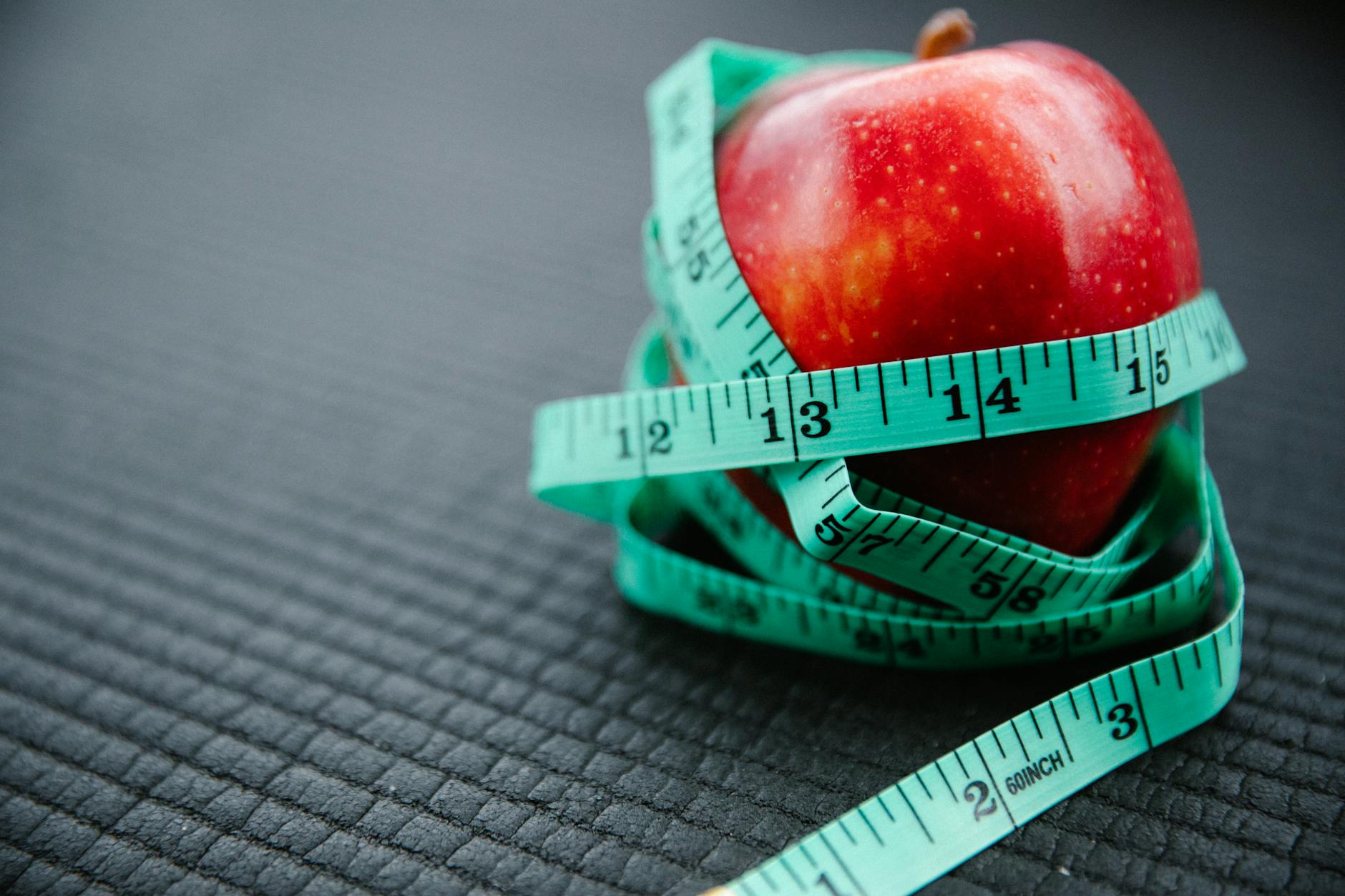
🥗 vs. 🍔: The Battle on Your Plate!
Have you ever stood in front of your fridge, torn between reaching for that crisp apple or giving in to the temptation of a leftover slice of pizza? You're not alone. In today's fast-paced world, the line between healthy and unhealthy food choices has become increasingly blurred, leaving many of us confused and frustrated about what to eat.
The consequences of our food choices extend far beyond satisfying hunger pangs. Unhealthy eating habits can lead to a host of health issues, from obesity to chronic diseases, while a nutritious diet can boost energy levels, improve mood, and even extend lifespan. But with conflicting information and clever marketing tactics, how can we navigate this culinary minefield? In this blog post, we'll dive deep into the world of healthy and unhealthy foods, exploring their impacts on our bodies and minds, and equipping you with the knowledge to make informed decisions about what goes on your plate.

Understanding Healthy Foods
Nutrient-dense Options
Nutrient-dense foods are the cornerstone of a healthy diet. These foods pack a powerful punch of essential vitamins, minerals, and other nutrients while being relatively low in calories. Some examples include:
Leafy greens (spinach, kale, collards)
Berries (blueberries, strawberries, raspberries)
Nuts and seeds (almonds, walnuts, chia seeds)
Fatty fish (salmon, sardines, mackerel)
Whole Foods vs. Processed Foods
Whole foods are minimally processed and free from additives, while processed foods often contain added sugars, unhealthy fats, and preservatives. Here's a comparison:
Whole Foods | Processed Foods |
|---|---|
Natural state | Altered from original form |
Rich in nutrients | Often nutrient-depleted |
No added ingredients | Contains additives |
Fiber-rich | Usually low in fiber |
The Role of Vitamins and Minerals
Vitamins and minerals are crucial for maintaining optimal health. They support various bodily functions, including:
Immune system function
Bone health
Energy production
Cell repair and growth
Balanced Diet Essentials
A balanced diet incorporates a variety of foods from all food groups. Key components include:
Fruits and vegetables
Whole grains
Lean proteins
Healthy fats
Low-fat dairy or alternatives
By understanding these aspects of healthy foods, you can make informed choices about your diet. Next, we'll explore the numerous benefits of adopting a healthy eating lifestyle.

Benefits of Eating Healthy
Embracing a healthy diet offers numerous advantages that can significantly improve your overall well-being. Let's explore the key benefits of eating healthy:
A. Weight management
Maintaining a healthy weight becomes easier when you focus on nutritious foods. A balanced diet helps regulate metabolism and control calorie intake, making it easier to achieve and maintain your ideal weight.
B. Improved energy levels
Nutrient-rich foods provide sustained energy throughout the day. Here's how different food groups contribute to your energy levels:
Food Group | Energy Contribution |
|---|---|
Complex carbs | Slow-release energy |
Lean proteins | Sustained fullness |
Healthy fats | Long-lasting fuel |
Fruits & veggies | Vitamins for metabolism |
C. Better digestion and gut health
A diet rich in fiber and probiotics promotes:
Regular bowel movements
Reduced bloating
Improved nutrient absorption
A balanced gut microbiome
D. Reduced risk of chronic diseases
Healthy eating habits can significantly lower your risk of developing:
Heart disease
Type 2 diabetes
Certain cancers
Osteoporosis
E. Enhanced mental clarity
Proper nutrition supports brain function, leading to:
Improved concentration
Better memory retention
Reduced risk of cognitive decline
Enhanced mood stability
By prioritizing nutritious meals and adopting smart food choices, you're investing in your long-term health and well-being. Next, we'll explore common unhealthy foods to avoid in your diet.

Common Unhealthy Foods
Now that we've explored the benefits of healthy eating, let's examine some common unhealthy foods that can negatively impact our health.
A. Fast food and its impact
Fast food has become a staple in many diets due to its convenience and affordability. However, its impact on our health can be significant:
High in calories, saturated fats, and sodium
Low in essential nutrients and fiber
Often leads to overeating and weight gain
Fast Food Item | Calories | Saturated Fat (g) | Sodium (mg) |
|---|---|---|---|
Big Mac | 563 | 10 | 1010 |
Large Fries | 510 | 6 | 350 |
Milkshake | 690 | 11 | 380 |
B. Sugary snacks and beverages
Excessive sugar consumption is linked to various health issues:
Contributes to obesity and tooth decay
Increases risk of type 2 diabetes
Can lead to mood swings and energy crashes
C. Processed meats
Processed meats, such as bacon, sausages, and deli meats, are associated with:
Increased risk of heart disease
Higher chances of developing certain cancers
High sodium content, leading to hypertension
D. High-sodium foods
Many packaged and prepared foods contain excessive sodium, which can:
Raise blood pressure
Increase risk of heart disease and stroke
Cause water retention and bloating
Understanding these common unhealthy foods is crucial for making informed dietary choices. Next, we'll delve into the specific health risks associated with consuming these foods regularly.

Health Risks of Unhealthy Eating
Now that we've explored common unhealthy foods, let's delve into the potential health risks associated with consuming them regularly. Understanding these risks can motivate us to make smarter food choices.
A. Obesity and related issues
Consuming unhealthy foods high in calories, sugar, and unhealthy fats can lead to weight gain and obesity. This, in turn, can cause:
Joint problems
Sleep apnea
Reduced mobility
Increased risk of certain cancers
B. Cardiovascular problems
Junk food and processed meals often contain high levels of saturated and trans fats, which can contribute to:
High blood pressure
Elevated cholesterol levels
Increased risk of heart disease and stroke
C. Diabetes and blood sugar imbalances
Regularly consuming foods high in refined sugars and simple carbohydrates can lead to:
Insulin resistance
Type 2 diabetes
Fluctuating energy levels
D. Nutrient deficiencies
Relying on unhealthy foods can result in various nutrient deficiencies, as these foods often lack essential vitamins and minerals. This can lead to:
Nutrient Deficiency | Potential Consequences |
|---|---|
Iron | Anemia, fatigue |
Vitamin D | Weak bones, depression |
Vitamin B12 | Neurological issues |
Calcium | Osteoporosis |
Understanding these health risks emphasizes the importance of making smart food choices and creating a balanced diet. In the next section, we'll explore strategies for incorporating healthier options into your daily meals.

Making Smart Food Choices
Now that we've explored the risks associated with unhealthy eating, let's focus on how to make smarter food choices for a healthier lifestyle.
Reading Nutrition Labels
Understanding nutrition labels is crucial for making informed decisions about the food you consume. Here's a quick guide to decoding nutrition labels:
Information | What to Look For |
|---|---|
Serving Size | Check if it's realistic for your needs |
Calories | Consider your daily caloric requirements |
Fat Content | Aim for lower saturated and trans fats |
Fiber | Higher fiber content is generally better |
Sugar | Less added sugar is preferable |
Protein | Higher protein can help with satiety |
Meal Planning Strategies
Effective meal planning can help you maintain a balanced diet and avoid unhealthy food choices. Consider these strategies:
Plan meals for the entire week
Create a grocery list based on your meal plan
Prep ingredients in advance
Cook in batches for multiple meals
Healthy Alternatives to Junk Food
Replacing junk food with nutritious alternatives can significantly improve your diet:
Swap chips for air-popped popcorn or veggie sticks
Choose Greek yogurt instead of ice cream
Opt for homemade smoothies over sugary drinks
Replace candy with fresh or dried fruits
Portion Control Techniques
Controlling portion sizes is essential for maintaining a healthy diet. Try these techniques:
Use smaller plates to visually trick your brain
Measure servings with kitchen tools
Practice mindful eating by eating slowly
Fill half your plate with vegetables
By implementing these smart food choices, you'll be well on your way to creating a balanced and nutritious diet.

Creating a Balanced Diet
Now that we've explored the risks of unhealthy eating, let's focus on how to create a balanced diet that nourishes your body and supports overall health.
Incorporating Variety in Meals
A diverse diet ensures you receive a wide range of essential nutrients. Try to include:
Colorful fruits and vegetables
Whole grains
Lean proteins
Healthy fats
Balancing Macronutrients
Achieving the right balance of macronutrients is crucial for optimal health:
Macronutrient | Recommended Intake | Food Sources |
|---|---|---|
Carbohydrates | 45-65% of calories | Whole grains, fruits, vegetables |
Proteins | 10-35% of calories | Lean meats, fish, legumes, nuts |
Fats | 20-35% of calories | Avocados, olive oil, fatty fish |
Mindful Eating Practices
Adopt these mindful eating habits:
Eat slowly and savor each bite
Listen to your body's hunger and fullness cues
Minimize distractions during meals
Practice portion control
Importance of Hydration
Proper hydration is often overlooked but essential for a balanced diet. Aim for 8-10 glasses of water daily, and consider these hydration tips:
Carry a reusable water bottle
Eat water-rich foods like cucumbers and watermelon
Limit sugary drinks and alcohol
By implementing these strategies, you'll be well on your way to creating a balanced diet that supports your health and well-being. Remember, small changes can lead to significant improvements in your overall nutrition.

Choosing the right foods is crucial for maintaining good health and preventing various diseases. By understanding the difference between healthy and unhealthy foods, we can make informed decisions about our diet. Incorporating nutrient-rich foods like fruits, vegetables, whole grains, and lean proteins while limiting processed foods, sugary drinks, and excessive fats can lead to improved overall well-being.
Remember, creating a balanced diet doesn't mean completely eliminating your favorite treats. Instead, focus on moderation and making smart food choices most of the time. By taking small steps towards healthier eating habits, you can significantly impact your long-term health and quality of life. Start today by making one positive change in your diet and gradually build on it for a healthier future.